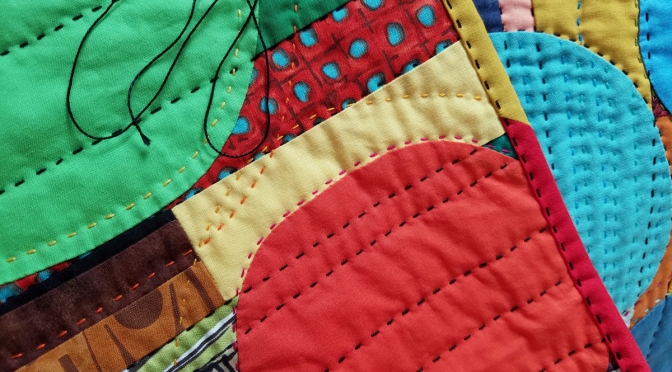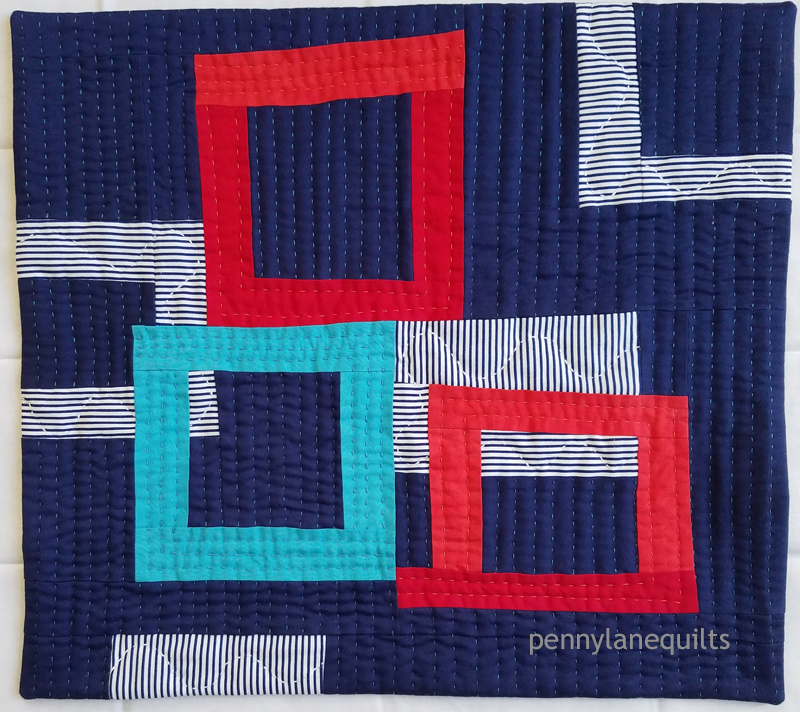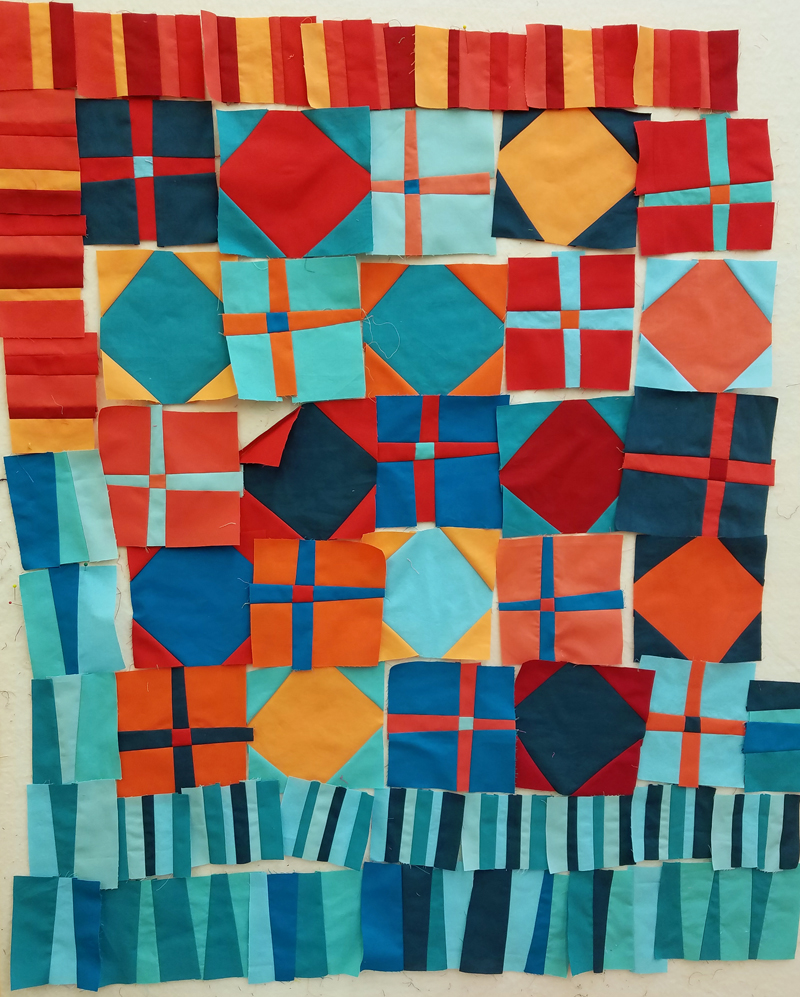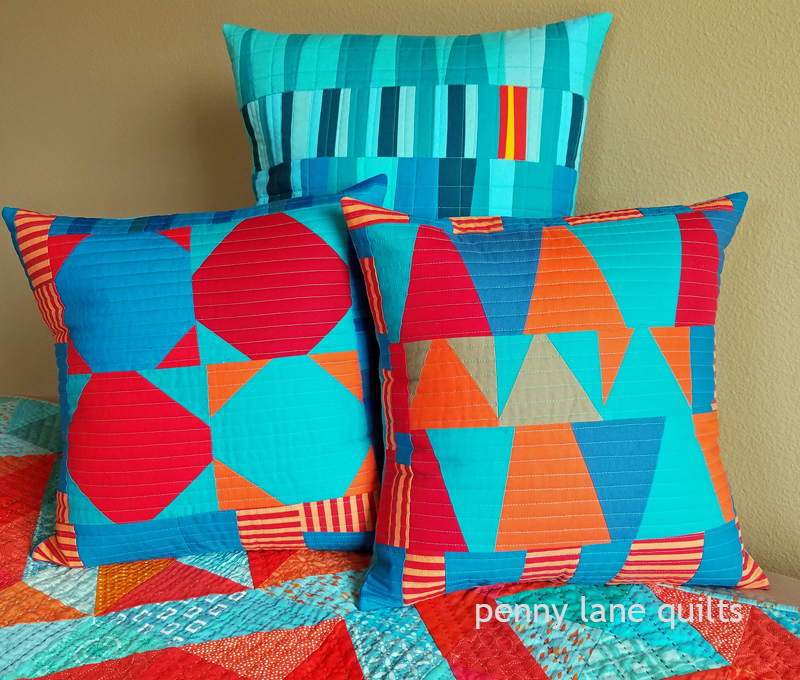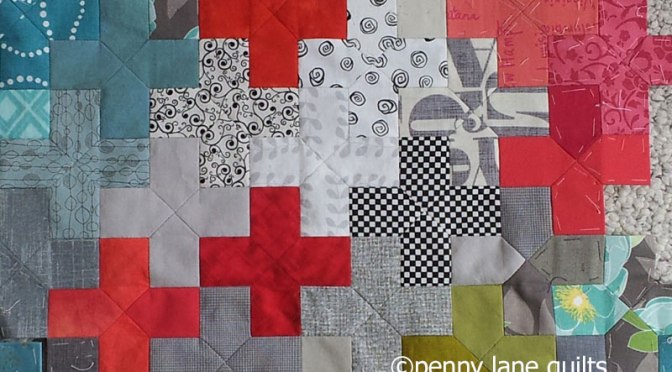Squircle Party was completed in October, 2023, just in time to make the QuiltCon entry deadline.
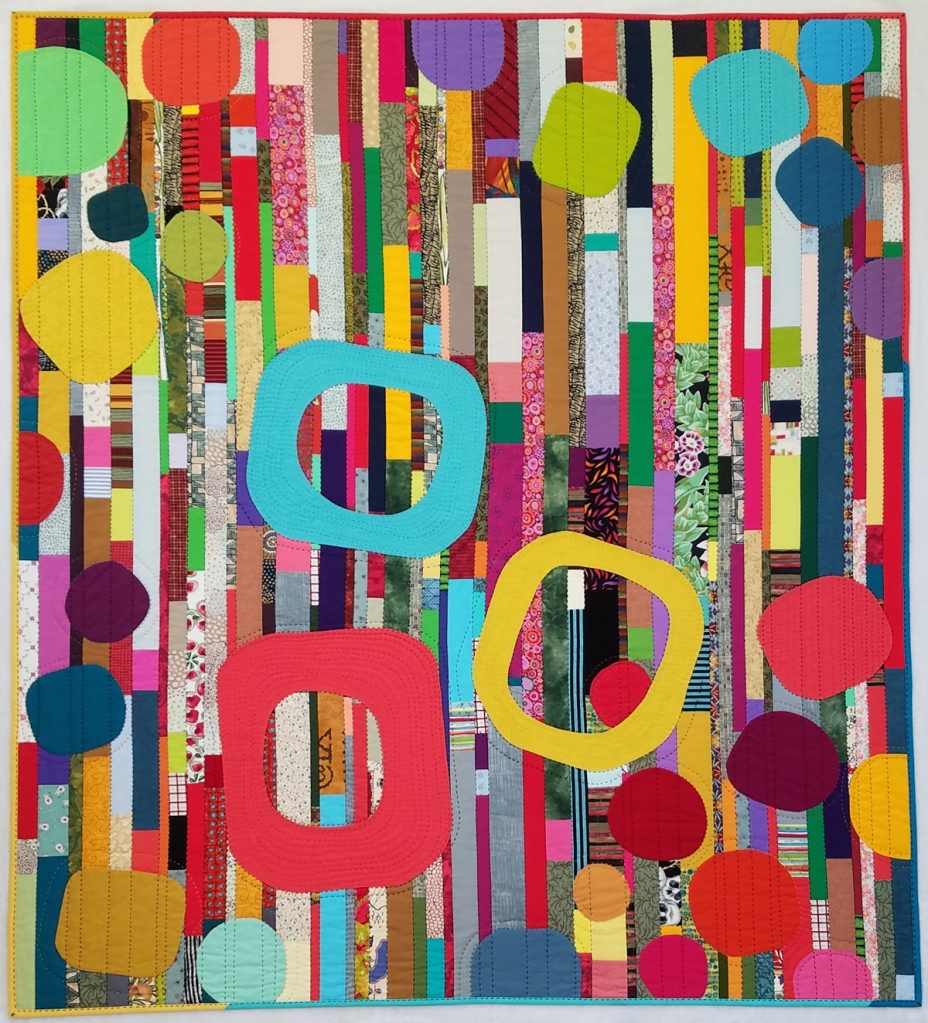
It began with a bag of print scraps inherited from a friend and an overflowing basket of solid scraps of my own.
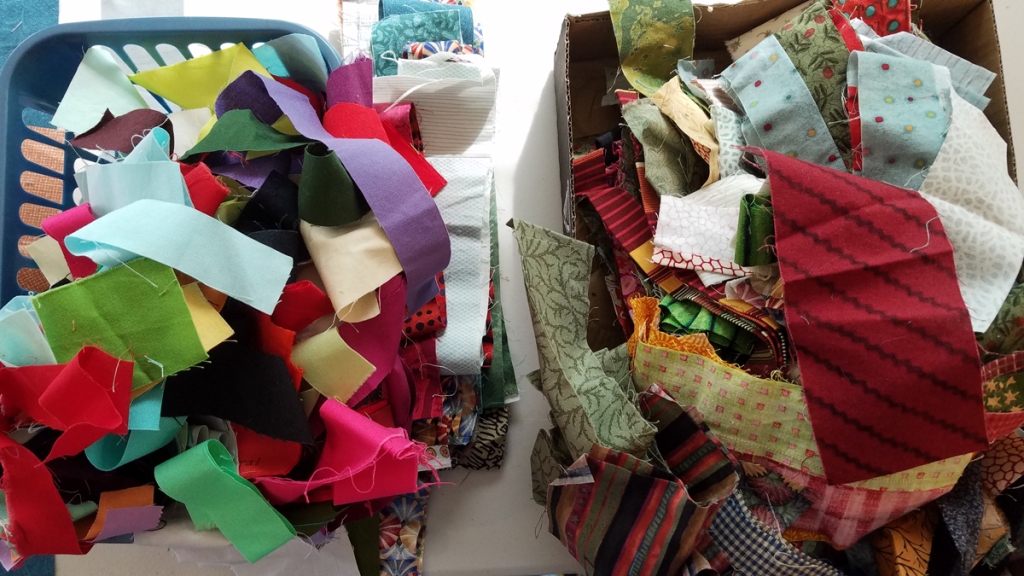
While thinking about possible ways to piece them together, I remembered seeing a fabulous, scrappy quilt by Karen Duling at QuiltCon 2022 with the clever title “Languishing Looks Like This”. You can find it and other wonderful quilts in her gallery. Karen cut all her scraps a consistent width, but mine vary between one inch and 2.5 inches. My goal was to leave each scrap its original width and length.
Piecing the strips provided a “leader/ender” opportunity while working on an improv pieced quilt. You can see the strips beginning to come together on the design wall with a wall hanging I was piecing simultaneously.
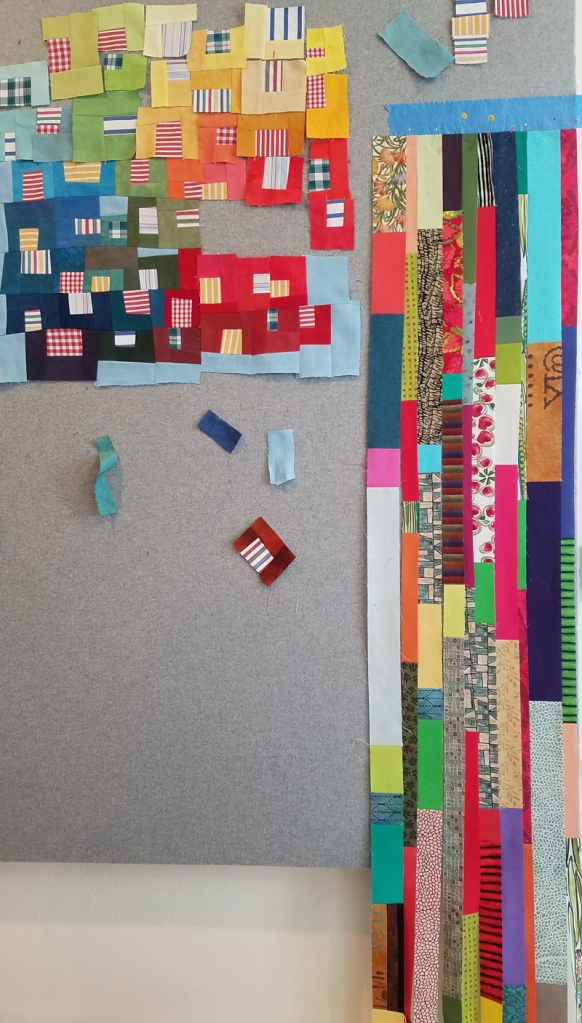
After piecing the strips, I began contemplating quilting plans. But while it was hanging out on the design wall waiting to be basted, I thought it might be fun to use the strips as a background and applique on large, colorful shapes. Squircles naturally came to mind. I cut the shapes mostly from linen and shot cottons and placed them randomly across the top.

Then I wondered what it would look like if I cut the center out of some of shapes.

I started moving them around looking for ways they related to each other. This involved a lot of time crawling around the floor, pinning, rearranging (and a bit of unstitching). As I hand appliqued them down, I continued making adjustments.

Once the shapes were appliqued, it was time to prepare for basting.
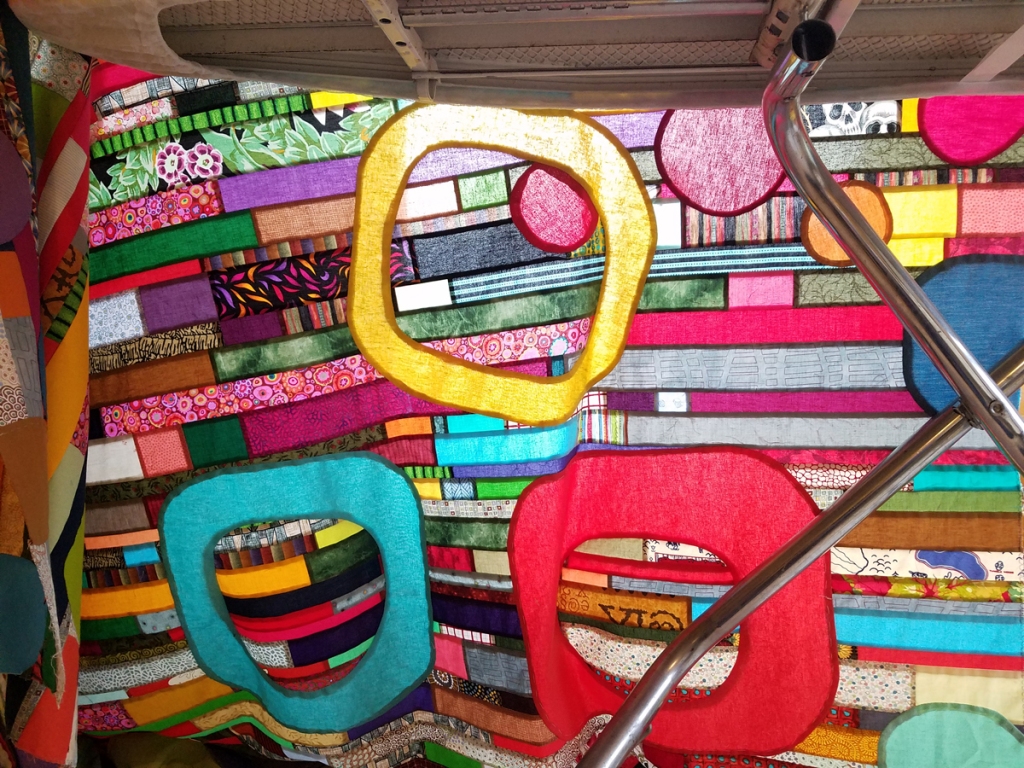
I wanted a backing that would show off the quilting in a different way and make the reverse side interesting in its own right. I combined large, scrappy color blocks with a variety of low volume fabrics.
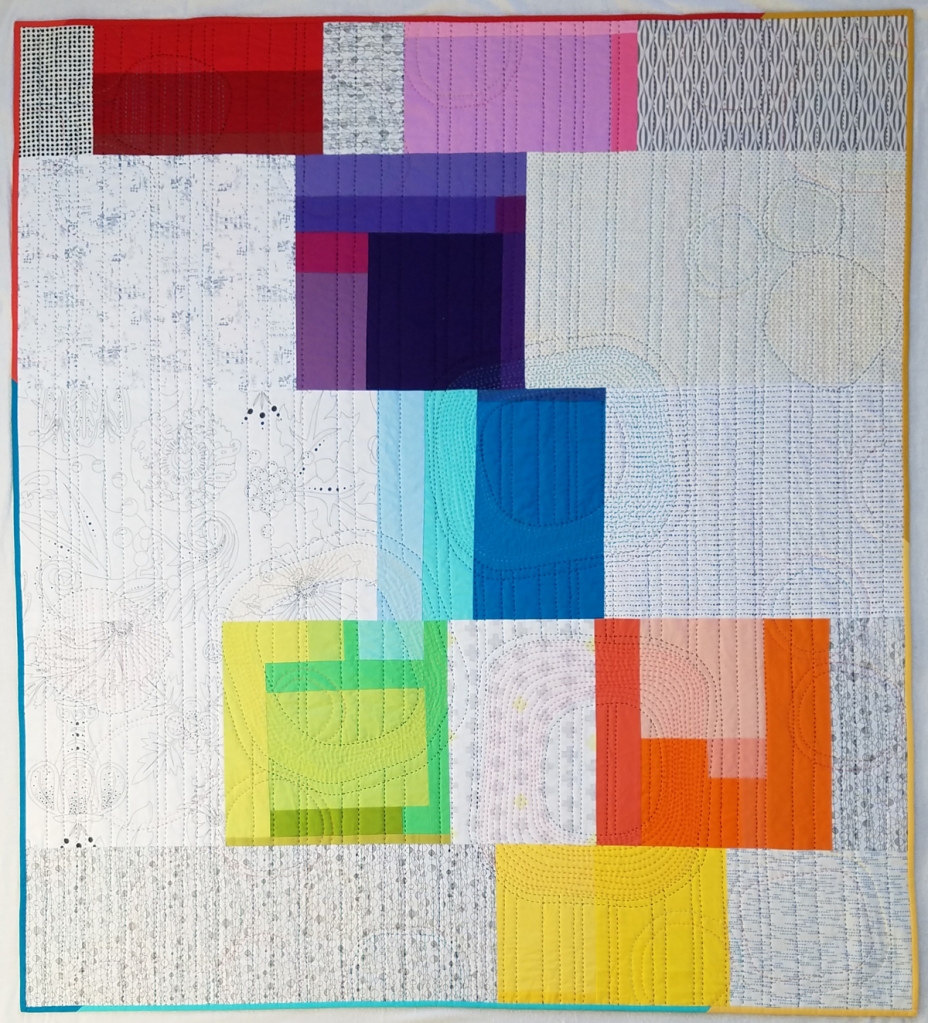
Using boards to baste works well for me and I prefer thread over pins.
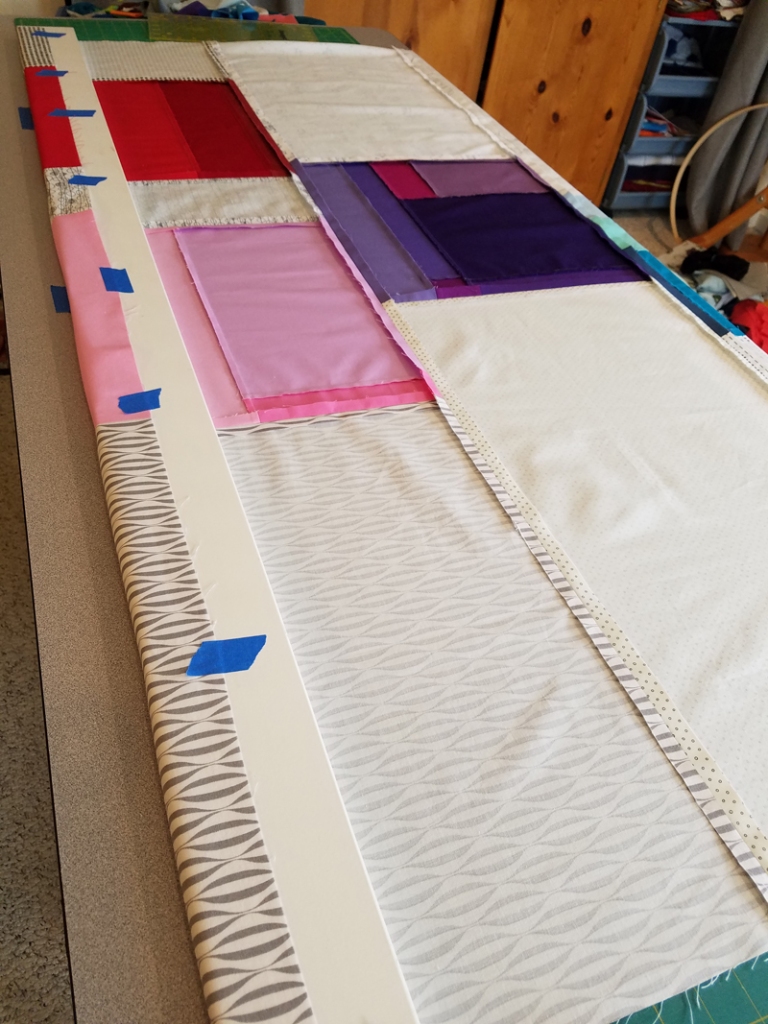
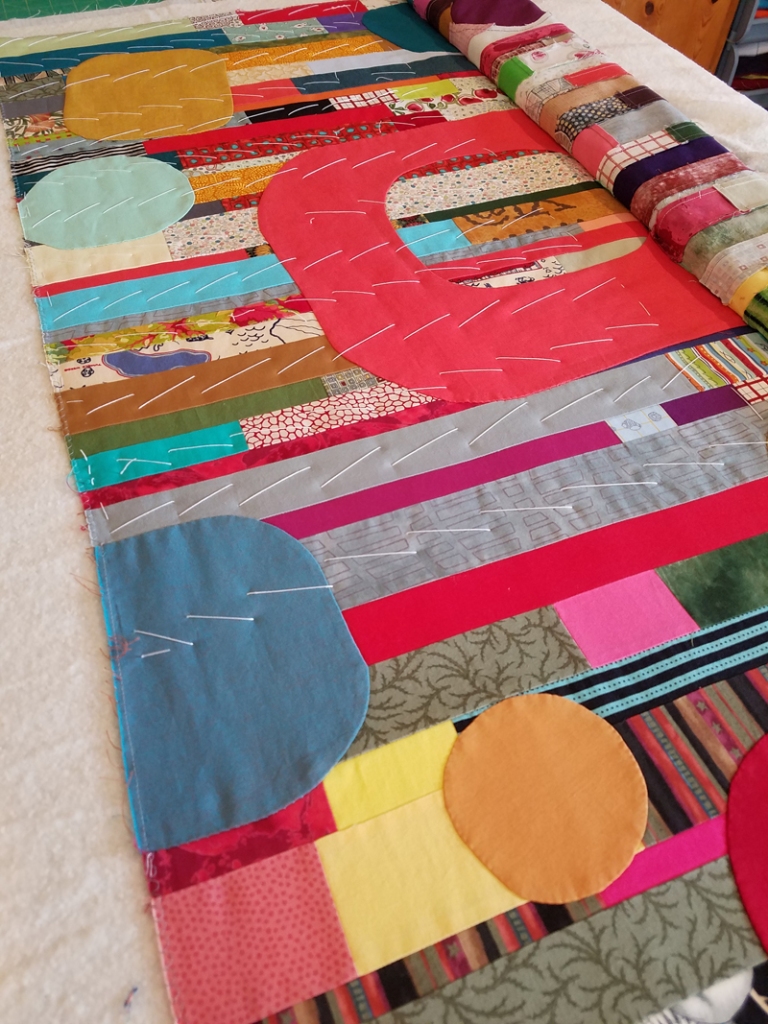
Hand quilting is my favorite part of the process. The long lines of black stitching went fairly quickly. The density of quilting varies on the squircles.


Once the quilting was finished, I turned my attention to the back. Embroidery stitches were added to accentuate the quilting and create extra texture.
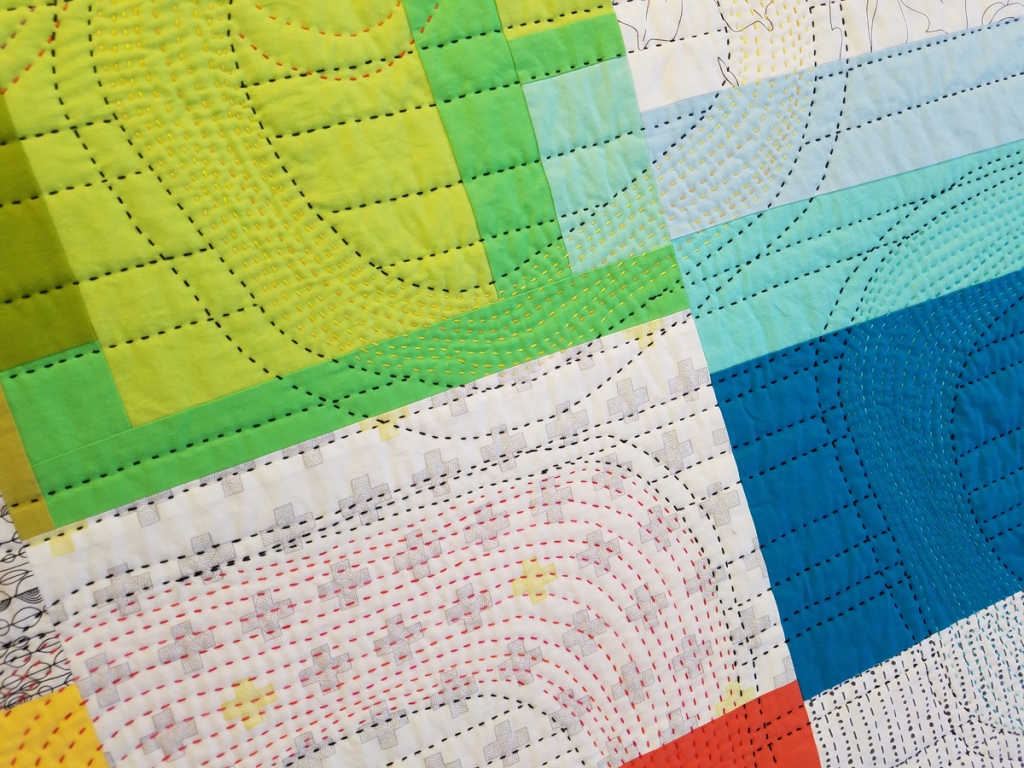
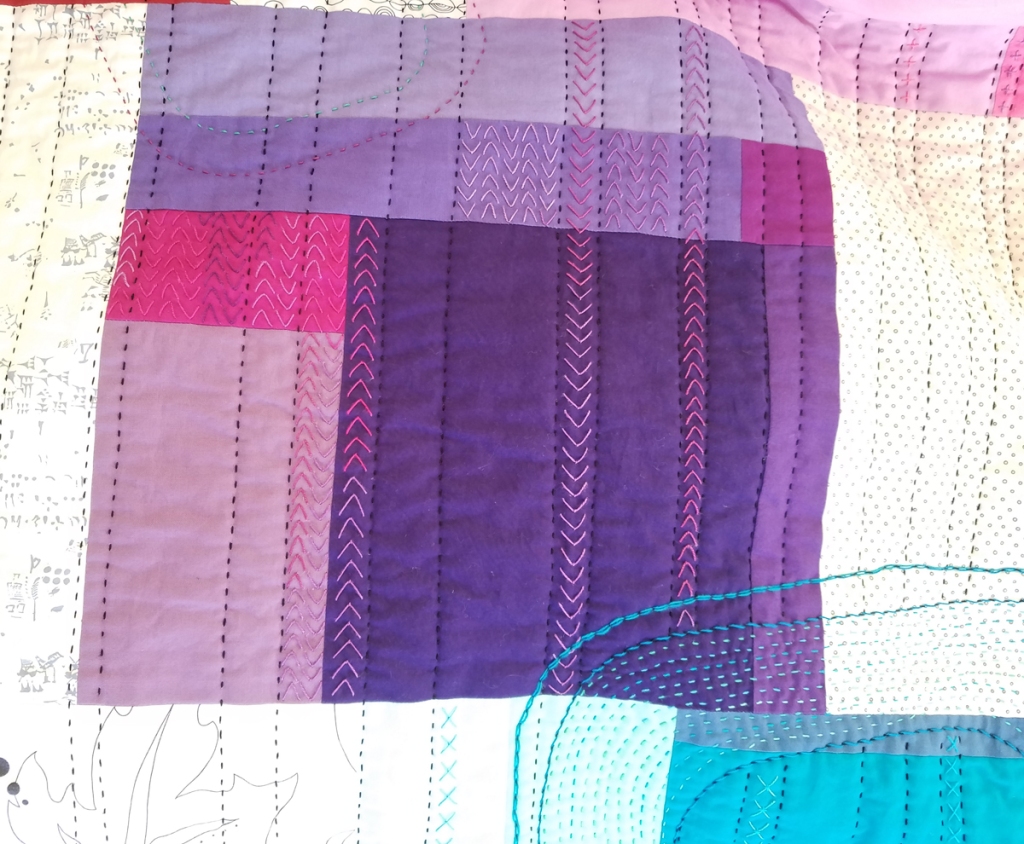
I was thrilled to receive the announcement that Squircle Party will be on display in the “Handwork” category at QuiltCon in Raleigh. This meant it needed a sleeve so I took a little extra time and created one that matched the piecing.
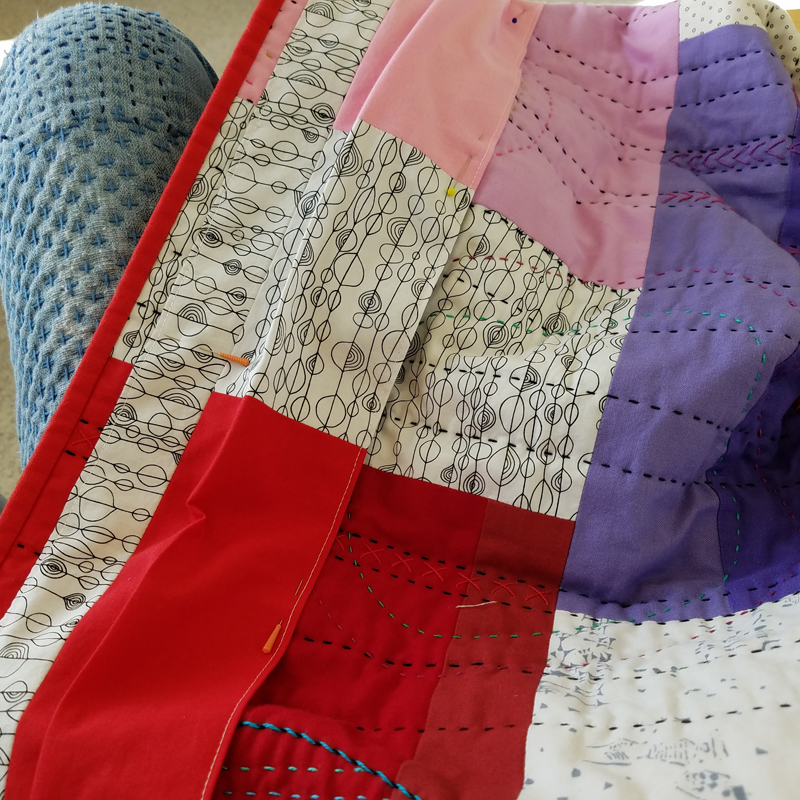
If you have the opportunity, I’d love you to have a peek at the reverse side. Just find one of those “white gloved” volunteers and ask for assistance. Which reminds me, I need to check my schedule and sign up to volunteer!

Hope to see you in Raleigh. I can’t wait to see all the quilts in the show and spend time with the special people who make them!
Squircle Party
54″ x 60″
Linen and commercial cottons
Machine pieced, hand appliqued, hand embroidered
Hand quilted

